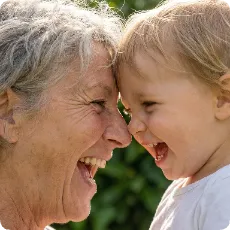-
 Understanding Winter Depression and Seasonal Affective Disorder: It’s Not Just the Weather
Understanding Winter Depression and Seasonal Affective Disorder: It’s Not Just the Weather
Seasonal Depression Winter Depression Light Therapy When the days grow shorter and the air turns colder, many people notice their energy dipping and their motivation fading. For some, ... Read More
-
 The Loneliest Time of the Year? Here’s How to Survive SAD
The Loneliest Time of the Year? Here’s How to Survive SAD
Seasonal affective disorder (SAD) Winter blues Holiday Depression If you’ve found yourself dreading the 5 p.m. darkness and are struggling to feel motivated to do everyday life, ... Read More
-
 GoodTherapy Member Spotlight: Dr. Glenda Clare
GoodTherapy Member Spotlight: Dr. Glenda Clare
As part of our GoodTherapy Member Spotlight series, we spoke with Dr. Glenda Clare, a licensed clinical mental health counselor and addiction counselor based in Durham, North Carolina. Dr. ... Read More
-
 How Feeling Safe Heals Your Brain: 5 Ways Interpersonal Neurobiology Explains It
How Feeling Safe Heals Your Brain: 5 Ways Interpersonal Neurobiology Explains It
What if healing didn’t start with trying harder, thinking differently, or isolating yourself, but with being seen, understood, and supported in relationship? Interpersonal neurobiology ... Read More
-
 Feeling Lonely In A Relationship? 4 Powerful Ways To Reconnect And Feel Close Again
Feeling Lonely In A Relationship? 4 Powerful Ways To Reconnect And Feel Close Again
Relationship Loneliness Emotional Intimacy Attachment There is a specific kind of ache that comes from feeling lonely in a relationship. It comes from sitting next to someone you love ... Read More
-
 4 Ways to Navigate Holiday Family Conflict: Finding the Quiet Middle
4 Ways to Navigate Holiday Family Conflict: Finding the Quiet Middle
The holidays tend to amplify everything. Joy, nostalgia, bittersweet memories, and sometimes the kind of holiday family conflict that leaves you feeling more drained than connected. ... Read More
-
 GoodTherapy Member Spotlight: Samantha Mirarchi
GoodTherapy Member Spotlight: Samantha Mirarchi
As part of our new GoodTherapy Member Spotlight series, we’re excited to introduce Samantha Mirarchi, director and founder of Wild Sage Therapy. This series highlights therapists who ... Read More
-
 Movember: You Can Grow a Mustache, But Did You Have the Conversation?
Movember: You Can Grow a Mustache, But Did You Have the Conversation?
Every November, many people grow mustaches in support of Movember: an annual campaign that raises awareness for men’s health issues, particularly mental health and suicide prevention. ... Read More
-
 How Perfectionism and Childhood Trauma Are Connected
How Perfectionism and Childhood Trauma Are Connected
Perfectionism and childhood trauma are often more connected than they appear. If you are a perfectionist, you are probably the person everyone counts on. You are the one who stays late, ... Read More
-
 6 Strategies to Stop Being Your Own Worst Enemy: Self-Kindness and Emotional Well-Being Explained
6 Strategies to Stop Being Your Own Worst Enemy: Self-Kindness and Emotional Well-Being Explained
Self-kindness and emotional well-being are closely linked. Many of us seek emotional relief when life feels heavy, whether it is anxiety, sadness, overwhelm, or tension in relationships. ... Read More
-
 7 Narcissistic Relationship Patterns That Lead to Emotional Avoidance
7 Narcissistic Relationship Patterns That Lead to Emotional Avoidance
Narcissistic relationship patterns often begin like a fairytale and end in confusion. You meet someone who feels like a once-in-a-lifetime connection. They are intelligent, charming, and ... Read More
-
 Why the Sex Talk with Kids Is a Myth (And What Works Better)
Why the Sex Talk with Kids Is a Myth (And What Works Better)
As children, talking with our parents about sex (or more like them talking at us) was probably super awkward, if it happened at all. Maybe you remember an adult fumbling through ... Read More
Browse by Category
Browse by Category
Therapy News Headlines
-
Recovering from a Traumatic Birth
Dealing with the Trauma of Giving Birth For many new mothers, giving birth is one of the most exciting times in life. After all, you’re bringing ... Read More
-
Dr. Aaron T. Beck: The Father of Cognitive Behavioral Therapy
Dr. Aaron T. Beck: The Father of Cognitive Behavioral Therapy On Monday, Nov. 1, the world lost an incredible psychiatrist when Dr. Aaron T. Beck, ... Read More
-
5 Tips for Helping a Client When You’re Both Stuck
by Megan Paterson, Licensed Marriage and Family Therapist in Roseville, California 5 Tips for Helping a Client When You’re Both Stuck Ever had a client ... Read More
-
Business Formation for Therapy Practices
by Connor D. Jackson, JD Connor D. Jackson is a healthcare attorney based in Chicago who serves independent practices in several states. Visit his firm’s ... Read More
-
Putting Kids First: Choosing Marital Partnerships and Co-Parenting over Divorce
Putting Kids First: Choosing Martial Partnerships and Co-Parenting over Divorce As many couples find out the hard way, the spark that led to them falling ... Read More
Dear GoodTherapy.org
-
Help! My Therapist Ended Her Practice and I Don't Know What to Do
I had been seeing my therapist for 28 years. Around March, she was unwell. This was a rare occurrence in our time together. But her viral infection ... Read More
-
Help! I Have No One to Talk To
Ever since my dad died last year, I have had no one to talk to. And really, I had no one to talk to for the last three years of his life, ravaged ... Read More
-
I Don’t Want to See My Family Anymore
Ever since my dad died last year, I have had no one to talk to. And really, I had no one to talk to for the last three years of his life, ravaged ... Read More
-
How Do I Trust a Therapist If I Can't Trust Anyone?
Ever since my dad died last year, I have had no one to talk to. And really, I had no one to talk to for the last three years of his life, ravaged ... Read More
-
Help! I Want to Stop Competing with My Friend
My best friend and I have known each other since college. We started out as “enemies,” Read More

